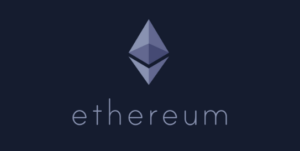Ethereum Revenue Hits 4-Year Low: Why Counting Out ETH Would Be a Mistake

Ethereum is facing downward pressure in current market conditions. As of September 12, the second-largest cryptocurrency struggled to gain momentum, remaining below the $2,400 mark. Analysis of the daily chart indicates a consistent decline in Ethereum’s value, with the price range between $2,400 and $2,800 acting as a significant area for liquidation.
Apart from the price movement, there is another concerning trend emerging. Observers note not only the drop in ETH’s price but also a significant decrease in revenue associated with the ongoing sell-off. Presently, the daily revenue generated by Ethereum’s smart contracts platform has fallen to levels last seen in May 2020.
The term “revenue” in this context refers to the fees paid to validators for transaction approvals and smart contract executions on the blockchain. Despite these challenges, some analysts remain optimistic about Ethereum’s future prospects, believing that the platform holds promise despite the revenue setbacks.
One reason for this optimism is the improvement in gas fees on the Ethereum network. Various enhancements have been implemented over time to reduce transaction costs on the mainnet. Following the congestion experienced during the recent bull market phase, which led to soaring gas fees, Ethereum developers introduced layer-2 solutions. Platforms such as Arbitrum, OP Mainnet, and Base have gained significant traction and user trust, as indicated by L2Beat data.
Despite the off-chain routing of transactions by these solutions, there have been no major security breaches that would deter participation. Notably, major tech companies and crypto exchanges like Sony and Coinbase have been actively involved in this space. Coinbase supports Base, while Sony plans to introduce its layer-2 solution, Soneium.
The success of Ethereum’s layer-2 solutions in alleviating the burden on the base layer has contributed to the reduction in fees. Additionally, the Dencun upgrade has further lowered gas fees on layer-2 platforms, making transactions even more cost-effective. This scalability progress on Ethereum has instilled confidence among observers regarding the platform’s future trajectory.
Moreover, Ethereum continues to evolve, with plans to scale on-chain post the transition to proof-of-stake after The Merge. The platform aims to implement Sharding in phases, ultimately enabling it to process millions of transactions per second without relying on off-chain methods.
In conclusion, Ethereum’s ongoing developments and improvements, combined with the adoption of layer-2 solutions, signal a positive outlook for the platform’s future growth and sustainability.



